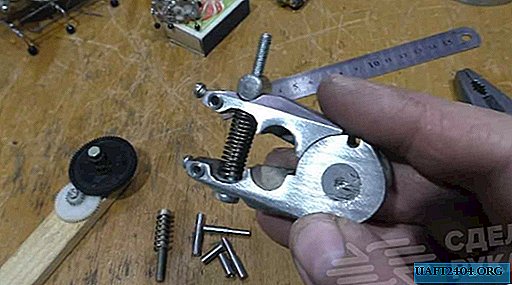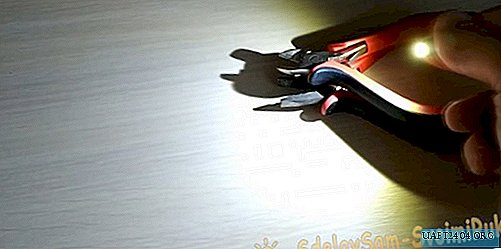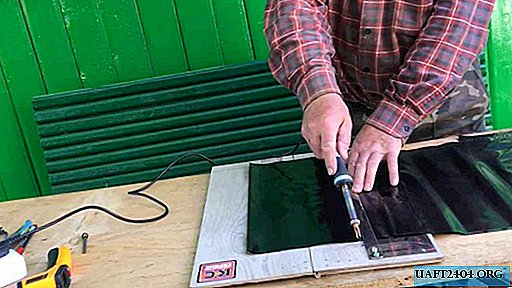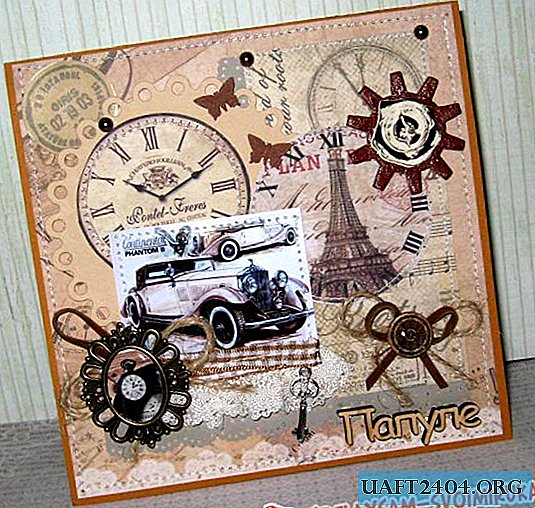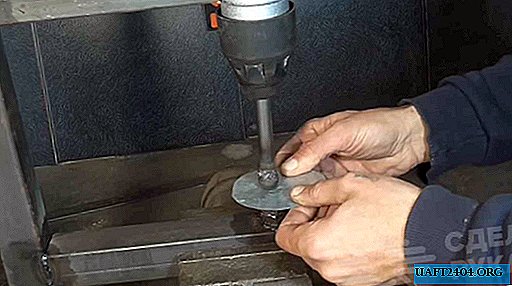Share
Pin
Tweet
Send
Share
Send
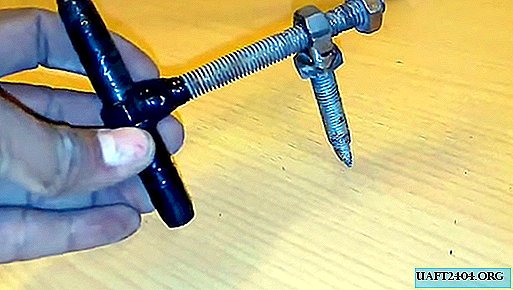
Will need
In addition to the annealed wire and pliers already mentioned above, we will need the following accessories:
- two bolts of the same diameter;
- two identical nuts;
- hairpin and PVC insulating tape;
- union with a union nut;
- piece of flexible hose.
Making a homemade clamp
The end of the shaft of the short bolt is sharpened under a blunt wedge and in the middle we make a shallow rounded slot. We weld the nut upright to the head of the upgraded bolt from above.

In the same way, we weld the nut to the long bolt. We screw the hairpin into it to the middle and wrap it and the adjacent part of the bolt with a nut with PVC tape to fix the connection and ease of operation.

In the center of the rod and, stepping back to the end about 2 cm, we drill two through transverse holes parallel to each other, with a diameter of 2.5 mm.

We screw the bolt with the holes into the nut welded to the short bolt until the holes are on opposite sides of the nut at approximately the same distance. Our homemade product is ready to go.

Use of a clamp in business
As an example, the hose will be attached to the union of the union nut. It is clear that instead of it, there may be a pipe, a pump nozzle, a crane, etc.
We bend the wire in half and cut it from the skein using nippers or pliers.
We place it in the place where the wire clamp should be and thread the ends through the loop.


We wrap part of the wire with the bent end around the hose and again thread the ends through the loop.


The free ends of the wire are threaded into the holes on the long shaft of the collar bolt, and the short bolt is recessed against the wire loop.

Cut off, leaving small tips, excess wire from the back of the holes with wire cutters or pliers.
We rotate the bolt with holes in any direction (in our case, to the right), making sure that the wire ends do not jump out of the holes, and the loop - from the recess of the short bolt. We compress the rings with pliers if they are separated from each other.

We continue the rotation until the wire loops tightly squeeze the hose and ensure a tight connection with the union of the union nut.
After that, the device is rotated around the wire loop, using it as the axis of rotation, 180 degrees.
We release the tightening device by rotating it in our case counterclockwise, and cut off the excess wire with the wire cutters. We hammer the wire ends to the hose.

It turned out a tight and durable connection, because in this case there is no danger of damage to the wire and there is the possibility of tightening control.

Now you can put a home-made collar in a secluded place until the next time, and in order not to lose parts of it, we screw another nut onto the bolt with holes.

Share
Pin
Tweet
Send
Share
Send

